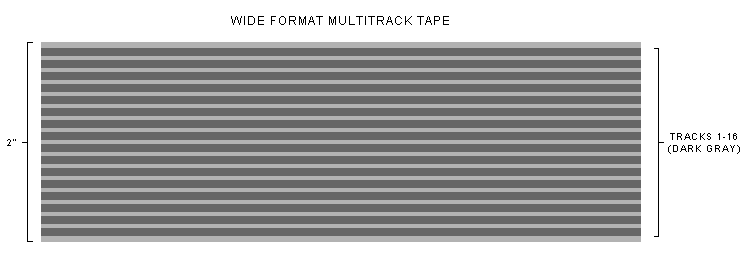Tape Recorders
General Description
A tape recorder employs a mechanical system to transport a length of tape through an array of electronic components. A tape recorder may be capable of recording sound from a number of sources independently, by generating multiple tracks on a single piece of tape. These tracks will typically be one, two, four, eight, sixteen, or twenty-four in number.
Magnetic Tape
Magnetic tape consists of a plastic base of high flexibility and high tensile strength, which is coated with a film of metallic oxide. It is generally available for audio recording purposes in an eighth-inch width in compact cassette format, and on hubs with or without flanges in quarter-inch, half-inch, one-inch and two-inch widths.

Tracks
Each of the physical recorded tracks on a tape is a narrow band occupying a portion of the width of the tape. As the transport mechanism of the tape recorder steadily draws the tape from the supply reel to the takeup reel, the tape passes over a number of metallic structures called heads. Each of these heads serves a particular function. The record head converts the electrical energy of an input signal to a corresponding magnetic flux, which is transferred to the tape as it passes over the head. The head contains a number of separate gaps, each producing a flux from its own input signal. The tracks are the regions of the tape which have passed directly over the gaps, in which the domains, or particulates of which the metallic oxide is composed, have been magnetically aligned in analogous correspondence to the flux present at the trailing edge of the gap. Between the tracks on the tape are the regions which do not pass directly over a gap, and which therefore are practically unaffected by the flux. These regions serve to reduce the crosstalk, or stray flux, between the tracks, thus better isolating each signal.


